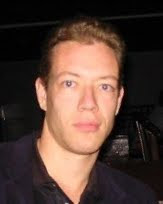how the Fed works
This is from Eventhorizon:
"The method by which the Fed permanently increases the money supply is via Permanent Open Market Operations (POMO). They buy US govt treasury securities and agency debt and credit the seller with newly created money. The newly acquired treasuries are added to the System Open Market Account (SOMA) which is the backing for our money (FRNs, Federal Reserve Notes). This is the monetization of US Govt debt, and my point was that it seems to have accelerated markedly the last couple weeks ($6bn in 2 weeks vs $2bn in 3 months)
'To keep the Fed Funds rate as close to target as possible the Fed temporarily adds (pumps) or subtracts (drains) money via Temporary Open Market Operations (TOMO). They use Repurchase Agreements (Repos or RPs) - the Fed buys treasury securites in exchange for cash and the counter-party agrees to repurchase them at a small premium (the implied interest rate) on a pre-agreed date (anything from 1 to 60 days later, but mostly 1 day, 1 week or 2 weeks). They carry out an operation of some kind pretty much every day, and it is done by dutch auction. The Fed does not publish the outstanding RP balance, so you have to figure it out by following along the daily transactions. Guttenberg’s point was they did a big pump today, while mine was to contrast this to the steady drain we have seen most of the year to date.
Finally the Treasury Department set up a program about a year or so ago whereby they put any spare cash balances they have to work via their own RP program called the Term Investment Option (TIO) program. Some consider this an additional source of liquidity or pumping. Personally I don’t see it that way, it acts like a sweep account attached to the government’s checking account, so it doesn’t add to the money supply. Whatever the truth, the TIO program accelerated this month, though it’s not that surprising given that its April.
'Hopefully that helps to make my post more intelligible. Bottom line is in April there seems to have been a noticeable change in activity, but as Russ points out it may or may not be significant. "

